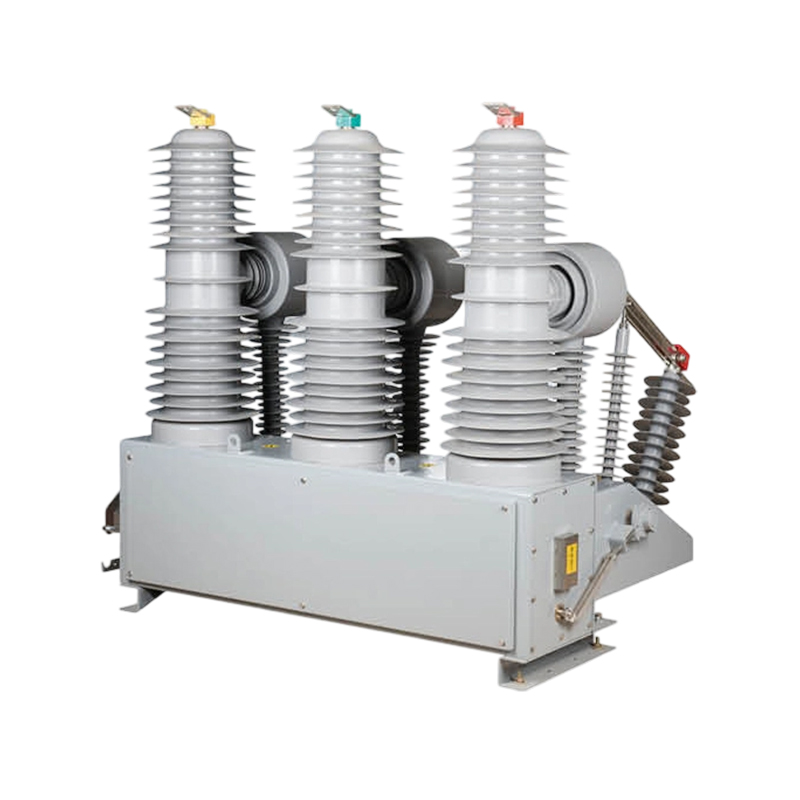Industry News
Key Components of SF6 Vacuum Bottle Circuit Breakers
SF6 vacuum bottle circuit breakers are specialized electrical devices used to interrupt and control medium to high voltage electrical circuits. These circuit breakers combine two arc quenching technologies—sulfur hexafluoride (SF6) gas and vacuum interrupters—to enhance the interruption performance and improve reliability in power distribution systems.
An SF6 vacuum bottle circuit breaker integrates a vacuum interrupter within an SF6 gas-insulated enclosure. The vacuum bottle is the sealed component where electrical contacts open and close to interrupt the current. Surrounding this vacuum bottle is SF6 gas, which serves as an insulating medium.
This dual approach leverages the advantages of both vacuum and SF6 technologies. The vacuum interrupter efficiently extinguishes the arc formed when contacts separate, while the SF6 gas provides good dielectric strength, helping to insulate and prevent electrical breakdown between components.
The main components of an SF6 vacuum bottle circuit breaker include the vacuum interrupter, SF6 gas enclosure, operating mechanism, and insulating housing.
Vacuum Interrupter (Vacuum Bottle): This part contains a pair of contacts in a vacuum environment. When the breaker operates, the contacts separate, creating an arc that is rapidly extinguished due to the absence of gas molecules.
SF6 Gas Enclosure: The vacuum bottle is housed inside a chamber filled with SF6 gas. This gas has high dielectric strength, which allows it to provide electrical insulation between live parts and the enclosure.
Operating Mechanism: A mechanical system controls the opening and closing of the contacts, either manually or automatically.
Insulating Housing: Encases the internal components and protects them from environmental factors.
When a fault or overload occurs, the breaker opens, separating the contacts within the vacuum bottle. The arc generated during this separation is quenched quickly due to the vacuum. The SF6 gas surrounding the vacuum bottle maintains insulation integrity and prevents the formation of unwanted arcs or flashovers outside the interrupter.
This combination offers several benefits. The vacuum interrupter ensures fast and reliable arc extinction, small wear on contacts and extending service life. Meanwhile, the SF6 gas enclosure enhances insulation, allowing the breaker to handle higher voltages in a compact form.
Compared to traditional oil or air circuit breakers, SF6 vacuum bottle breakers require less maintenance because they do not rely on oil or other consumables that degrade over time. They also produce fewer emissions during operation, making them environmentally preferable in certain contexts.
SF6 vacuum bottle circuit breakers are suitable for medium and high voltage electrical networks in industries such as power generation, transmission, and distribution. They are commonly used in substations, industrial plants, and utility grids.
These breakers protect transformers, motors, and other electrical equipment from damage by isolating faulty sections quickly and safely. Their compact size and high dielectric properties make them ideal for indoor and outdoor installations where space or insulation requirements are critical.
Installation involves ensuring proper grounding, connection, and sealing of the SF6 gas chamber to prevent leaks. The operating mechanism must be calibrated for smooth and reliable performance.
Maintenance needs are generally low but include periodic checks for SF6 gas pressure, mechanical operation, and contact condition. Monitoring systems can detect leaks or abnormalities early, helping to avoid unexpected failures.
SF6 vacuum bottle circuit breakers combine the strengths of vacuum and SF6 gas technologies to provide efficient, reliable, and compact solutions for electrical circuit protection. Their role in medium and high voltage systems supports safe and stable power distribution in various applications.

Next
Maintenance and Inspection of Waterproof Electrical Switch Boxes
<p>A <a href="/product/cable-branch-box-switch-station/" target="_blank"...
View More- PRODUCTS
- New Energy Power Distribution Equipment
- Box Type Substation
- Cable Branch Box/Switch Station
- High Voltage Switchgear
- Low Voltage Switchgear
- Engineering Vacuum Circuit Breaker
- New Energy Vehicle Floor Charging Pile
- Commercial Energy Storage
- Photovoltaic Complete Box
- High Voltage Arrester
- INFORMATION
-
-
Phone+86-13868788848
+86-13356188725 -
Tel+86-0577-88810567
-
E-mail
-
AddNo. 59, Youyi Road, Xinguang Industrial Zone, Liushi Town, Yueqing City, Zhejiang, China
-
- ENQUIRE WITH US
Photovoltaic Module Manufacturer




 English
English  中文简体
中文简体  русский
русский  Español
Español  عربى
عربى 


